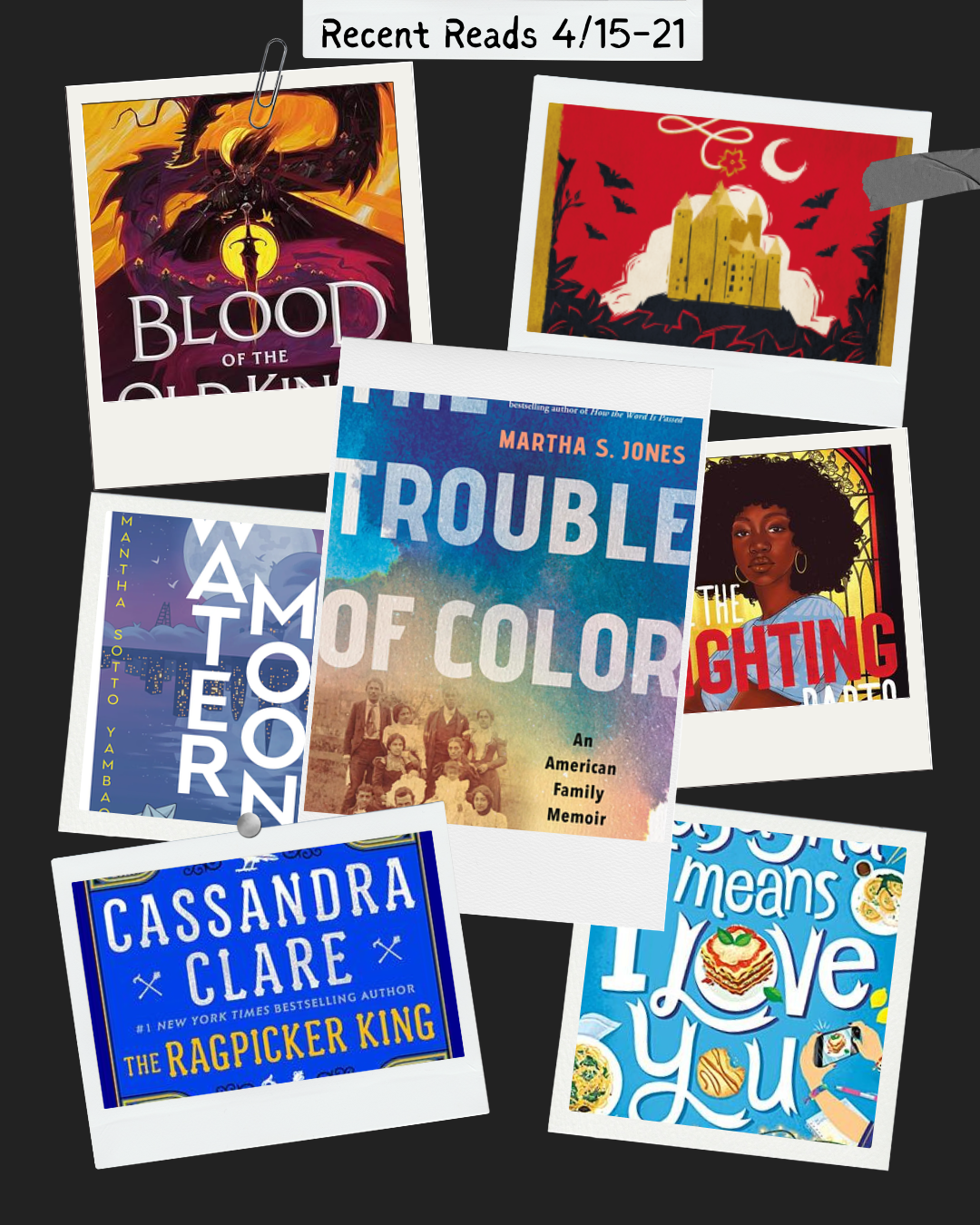[Even though All the Fighting Parts and Lasagna Means I Love You appear in the thumbnail, I will not include the reviews here. When designing the image, I forgot that I have separate reviews for all of my SCASL books. Whoops.]

I have started to approach my book box books with a bit of hesitation since so many have not been hits for me. That means that I end up with pleasant surprises when I end up with books like this one. I really enjoyed the read and appreciated how the author developed and interwove the three separate points of view. I suspect, though, that the narrative might not work for many because the writing level reads more juvenile than the
gruesome depictions in some of the narrative suggest. The book has been translated so I wonder if that discrepancy is due to the narrative style in the original Korean or the translation of said narrative style. It worked for me, though. I also appreciate the way that the author wrapped up the narrative to give the reader a satisfactory conclusion while leaving the door open for sequels.
I hoped that this one would work for me since the original classic on which Cogman based this novel, The Scarlet Pimpernel, is one of my favorites, surpassed only by The Count of Monte Cristo. I have read from Cogman before, the first in her Invisible Library series but never continued in the series since that book was just mid to me. Thankfully, I really enjoyed this one. Cogman tells this story from the perspective of a serving girl who, because of her uncanny resemblance to

Marie Antoinette, finds herself part of the League of the Scarlet Pimpernel. This adds complexity to the narrative since her position adds a lower class perspective to this rescue mission of French nobles from a revolution originally started because of the rampant unjust exploitation of the lower class. Oh, there’s also vampires. Yup. That’s how Cogman weaves their existence into the narrative. I’m intrigued to see how Cogman will continue this story.

Jones told a fascinating family history that wrestled with the color line, something that had profound effects on her family, people descended from former slaves exploited by their masters, and one tradition-defying voluntary interracial marriage on the freedman side of the author’s family. This arbitrary societal “norm” had profound, generational impacts on her family. Jones treated this with care and with compassion. I
highly recommend this family history/memoir.
Although this narrative did not rise to the level that I could justify keeping both book box copies I ended up with accidentally, I did enjoy it enough to keep one. This narrative awkwardly straddled the line between cozy and something more. However, the author quickly endeared the two main characters to the readers, which in my case, kept me reading. When the book first opens, the reader, understandably, might think that this

magical pawn shop exists in the same kind of world as the coffee shop in Before the Coffee Gets Cold. Soon, however, the reader finds themselves plunged into a rather nonsensical world with high stakes as the two main characters begin a search for the pawn shop manager’s father. I found myself fully engrossed in their journey through this world that although it seemed nonsensical, actually worked to peel back all the extra layers from the main characters. I enjoyed my reading experience but can see how this might not work for other readers.

Yawn. This book epitomized middle book syndrome. Not only did nothing really happen in this book until the last ten to fifteen percent but Clare also spent hundreds of pages on moving chess pieces around. Clare has a lot of groundwork laid for an excellent fantasy world and narrative. I saw that potential in the first book. I really don’t know where that went here. Clare wrote well enough that I was not bored. (How would I get through a nearly 600 page book otherwise.) That’s a good thing, I suppose.
